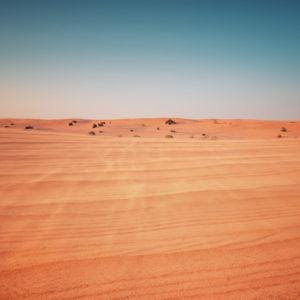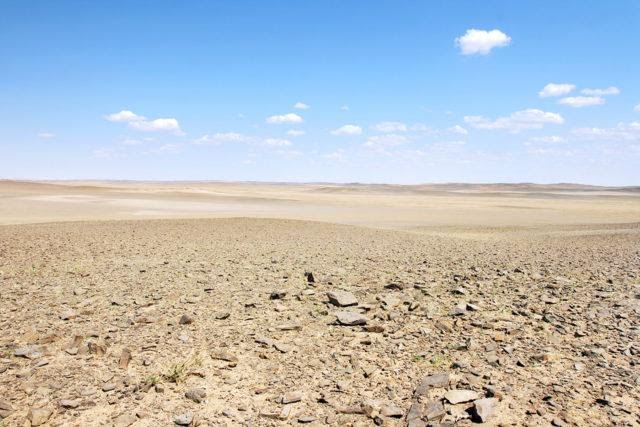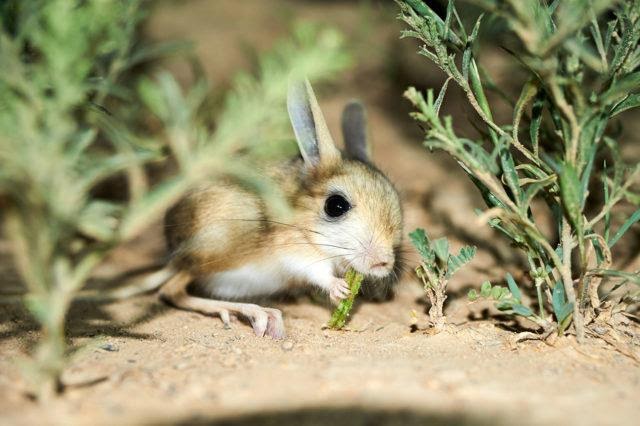
What is a Desert?
Deserts evoke explicit thoughts regarding geology: usually that they are dry and sandy rises or rock, or a combination of both. Be that as it may, deserts are undeniably more than this. There are various ways to characterize the desert biome. They and not about the sorts of rock, the measure of sand, or even the temperature because there are both cold and hot deserts. The necessary clarification is that deserts are topographic scenes that get little precipitation in a typical year. The threshold is 10 inches or 25cm. In any case, more than just having low precipitation, a desert is “dry.” This implies a high pace of water loss through plant recovery (called transpiration) and through dissipation. These two viewpoints are consolidated into something many refer to as evapotranspiration. This is the measure of water that the area would lose when accessible. For deserts, evapotranspiration proportion surpasses average yearly precipitation by anything from 2:1 to 33:1. The higher the proportion, the less accessible dampness there is. The rough nature of the soil means that the most moistness leaks through the topsoil quickly.
Desert precipitation experiences are unpredictable. The average precipitation is only that. A desert may experience more than the “normal” in one year and not experience any precipitation the year before and the year after. Deserts will vary according to their atmosphere and area, and their general aridity can impact numerous things including the biology, the natural way of life, and plant and creature types. High dissipation results in higher salt levels, further influencing which plants can develop and the proper size and the quantities of herbivores that may benefit from them and, thus, carnivores. Some experience tremendous temperature changes, and scorching deserts, which may become insufferably hot during the day and excessively cold around nighttime. This is because the stone and sand retain heat during the day and discharge it around the evening. There may likewise be extreme variations between warm and cold seasons, including extreme winds and storms because of the blending of cold and warm air.
Deserts are imperative to the planetary ecosystem. They cover roughly 1/3 of the dry regions on the planet. They are likewise among the most delicate and imperilled biomes.
Types of Desert
There are generally four kinds of desert: Coastal, chilly, hot and dry, and semi-arid.
Check out our GCSE and A-Level Hot Deserts Teaching Resources!
Coastal Deserts
These are commonly favourable to life and do not have the extreme temperature variations that other kinds experience. Life is more plenteous here, the soil less acidic, and will, in general, be dry because of nearby geography, for example, mountain ranges or lakes and water networks that draw off a large portion of the precipitation that they would otherwise experience.
Coastal deserts experience a short winter of moderate average temperatures of 5C/41F for winter while summer averages between a mild 13°C/55°F to a hotter 24°C/75°F. Precipitation is lower, and this sort of desert is better at holding what little moisture it secures – on average, around 5 inches or 13cm every year.
Cold Deserts
Not in the usual places where we imagine deserts to be, cold deserts are found at extreme latitudes. They fall into two full sorts:
Far from coastal territories and in a cold zone getting low precipitation.
Near to mountain ranges which draw away precipitation that may somehow or another have made tundra or fields
Its yearly precipitation falls as snow, which may, in some cases, stay on the ground until the mid-year before it dissolves. If the temperatures do not rise adequately, it might stay for longer than a year. Their winters are incredibly cold, ordinarily between – 2 and 4°C (28.4°F to 39.2°F). Summer temperatures are surprisingly warm, commonly somewhere in the range of 21 and 26°C, which is somewhere in the range of 69 and 79°F. Precipitation is relative, and even though autumn and winter get the vast majority, it is, for the most part, lower than other geological types, and is inadequate to sustain much life – subsequently, the reason they are regarded as deserts.
The Gobi is an example of a case of a cold desert. Some believe that Antarctica’s interior is a desert because of low precipitation.

Hot and Dry Deserts
What we consider as the “normal” desert, is, for the most part, demonstrated by the sand ridges of the Middle East and North Africa, is not exactly as empty, hot or barren as we suspect. While they do experience sweltering summers (43-48°C or 110-120°F), the yearly average is a lot cooler 20-25°C or 68-77°F. Night temperatures are a regular 10°C or 50°F. They additionally experience cold winters, a season where low degrees of precipitation, for the most part, drop to – 18°C. Summer nighttime temperatures drop significantly, which is the reason the yearly averages are so extraordinary. Surface albedo is high – heat obtained during the day is radiated t night. This sort encounters close to 11″ (28cm) of precipitation every year while many experiences even less than that. Proof from the Atacama Desert, for instance, indicates that a few territories have never experienced precipitation. The periodic tree breaks Their desolate appearance includes only a few trees; shade and coverage are uncommon, and there are likely to be sand dunes.
The Sahara is a hot and dry desert.
Semi-Arid Deserts
Semi-dry deserts have, by definition, more elevated levels of precipitation contrasted with the other three sorts included here, although not significantly more. They are additionally not constrained by temperature. They are milder by and large, yet they can exist more toward the north, which means there are colder and hotter sorts. Daytime and evening time temperatures are not as extraordinary, nor are the divisions between summer and winter. There is some discussion about whether they ought to be viewed as deserts or rather as a sort of plain or “steppe.” In any case, others contend that the other geographical highlights – of low precipitation (1-2″ or 2-4cm yearly) and high evapotranspiration leave them solidly in the desert classification. Instances of colder semi-dry deserts incorporate the Nearctic zones, which fuse Newfoundland and Greenland. Hotter models are the Sagebrush of Montana and the Great Basin and quite a bit of Australia’s Outback. Summer average temperatures are somewhere in the range of 21 and 27°C while seldom going above 38°C as the sweltering and dry kinds of deserts regularly do.
Deserts as Rich Archeological Sources

A portion of our most prominent archaeological finds has originated from desert situations. Likewise, with the anaerobic states of wetlands where natural material is cut off from microorganisms, such material gets by in deserts because of the absence of dampness and microscopic organisms that can, in the end, break it down. This is the explanation behind the endurance of numerous predynastic Ancient Egyptian bodies from shallow graves in the desert. Without the low moistness and drying up, they are unlikely to have survived so well. These bodies originate before the preservation procedure and accordingly, no treating liquid or evacuation of organs that debase rapidly as found in the following industrial processes found in a complex society. The equivalent is valid with the mummies of the Chinchorro people of the Atacama (a cold desert). What is generally noteworthy about these mummies is that they originate before the Egyptian culture by approximately 2,000 years, and they sometimes used similar procedures.
Be that as it may, the archaic exploration of deserts is about unquestionably more than basically the safeguarding of ancient rarities and their improved odds of endurance. Different archaeological disciplines explore various sections of the desert.
Desert Phenomenology/Experiential Archeology: This archaeological methodology looks to see how individuals live in the deserts, their background, and how they see their nearby environment(s). It incorporates their tactile encounters with everyday living
Desert economy: Deserts have consistently been crucial assets in the economy. Sand and stone have been employed to fabricate structures where wood is meagre, just like the case with Ancient Egypt. However, they are likewise a source of valuable metal and jewel mining
Water: Deserts are regions of low precipitation and low dampness, which appears contrary to the necessity of water for every living thing. It is an incredible source of analyzing advancements from the easy to the complex, in gaining, harnessing, storing and saving water and its preservation. However, more than that – what significance (functional or profound) do those individuals place on the water?
Deserts landscape archaic exploration and human topography: Particularly of the courses crossing deserts and the connections between the societies within them, at the fringes of deserts, and further abroad. The investigation of routes can incorporate relocations of individuals, when and how they move, the coordination of developments and ordinary pathways, for example, the Silk Road
Water engineering and mechanics are likewise helpful to archaeologists of desert zones. It makes a fascinating area of study that shows both human resourcefulness and human potential for self-destruction. The water system of Mesopotamia during the early civic establishments is one of the most remarkable accomplishments of both. In the first occurrence, filtering water from the Euphrates and the Tigris rivers to the desert interiors allowed the establishment of large urban communities. Notwithstanding the verdant valleys around and between the streams, the area had lower precipitation than Egypt, which depended on yearly Nile flooding. However, the water system that allowed for human advancement also led to its ruin as the overwater system prompted predictable crop failure as the water evaporated, leaving salts that would, in the long run, soak the land.
Desert Ecology and Biodiversity
The notion of deserts as cold and dormant is unwarranted and has seemingly prompted desert biomes to be overlooked in research writing contrasted with others. A large number appear to be dispossessed of life, certainly during the day in summer in sweltering deserts when temperatures are conceivably searing, and in winter in some cold deserts where below zero temperatures make life troublesome. In any case, they are plentiful in both vegetations. What is so incredible about deserts as biomes, is their one unique natural profile. Species exist in these environments that occur nowhere else. The Mojave Desert is a valid example; it is probably the harshest condition on earth with a humidity level that seldom goes higher than 40%, yet it keeps up rich biodiversity all through the barren environment. All species have adjusted to living right now, and many are protected by their natural constraints and fragile ecological prerequisites of adapting to the high temperatures and dry conditions.
Regular botanical science incorporates succulents, for example, prickly plants which do not have leaves like different species, yet have spines to secure the fleshy collection of chloroplasts adjusted to store water, and shallow roots to rapidly retain the small amount of moisture that reaches the topsoil before evaporating or soaking through. Comparative specialization is additionally valid for fauna, which has high water retention, cannot perspire, and will, in general, be cold-blooded and little. Bigger creatures and warm-blooded animals are uncommon, although this is not generally the situation.
Kangaroos, for instance, which live in the hot desert atmosphere of Australia, are warm-blooded vertebrates and should find cover during the most sweltering part of the day to prevent overheating. They have, nonetheless, built up an extraordinary means of defence against extreme heat in that they lick their bodies, and the salivation cools the blood.
Camels endure well in deserts on account of their high-water retention and happily survive in temperatures up to 48°C/120°F.
These are two uncommon instances of both warm-blooded and bigger creatures that live in hot desert situations.
On the other, what about cold deserts? They have attracted less consideration than their hotter and drier partners. We do comprehend that their extreme latitudes imply most cold deserts will generally experience lengthy periods of constant darkness in the winter and perpetual sunlight in the summer. This also affects nearby biodiversity. Like their partners in hotter regions, plants must be drought resistant. Be that as it may, succulents do not survive when these conditions are cold. The most widely recognized sort of plant in cold deserts are grasses where they collect in bunches on rocks and in zones where the little dampness that occurs is plentiful. Bushes happen in certain spots and the sorts of plants you may see in scrubland; however, this is uncommon. Trees are additionally uncommon with just a small amount of species, for example, the camel thistle acacia in the Gobi and the pistachio tree, which develops in the cold deserts of Iran.

Creatures in cold deserts are warm-blooded and more significant than their hot desert partners. Typical examples are certain sorts of deer and gazelle present in most cold deserts, sheep and goats, and in South America, llamas and alpacas. Most definitely, this is the domain of the wolf, the snow panther, and jackals, contingent upon where on the planet the desert is found. Little mammals are substantially more plentiful, and cold-blooded reptiles are less frequent. Scorpions occur in only one cold desert – the Iranian Desert.
Frequently Asked Questions
What defines a desert as a natural system?
Deserts are characterized by arid conditions with low precipitation and sparse vegetation. They often have unique flora, fauna, and landforms adapted to extreme dryness.
How do plants and animals adapt to survive in desert environments?
Desert plants have specialized adaptations like water storage, reduced leaf surfaces, and deep root systems. Animals have efficient water conservation and temperature regulation mechanisms.
How do desert ecosystems interact with surrounding landscapes?
Deserts often interact with neighbouring ecosystems through wind-blown sand, water runoff, and migration of animals seeking resources.
What role do desertification and human activities play in shaping desert ecosystems?
Desertification, caused by factors like overgrazing and deforestation, can degrade desert ecosystems. Human activities can also introduce invasive species and disrupt natural processes.
How can deserts provide valuable insights for sustainable resource management and adaptation to climate change?
Studying desert ecosystems offers lessons in water conservation, innovative farming techniques, and sustainable land use practices that can be applied globally.
References
- Deserts as Ecosystems and Why They Need Protecting . (n.d.). Retrieved from Environmental Science: https://www.environmentalscience.org/deserts-ecosystems
- Deserts as natural systems. (n.d.). Retrieved from AQA: https://www.aqa.org.uk/subjects/geography/as-and-a-level/geography-7037/subject-content/physical-geography/hot-desert-systems-and-landscapes/deserts-as-natural-systems
